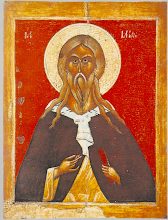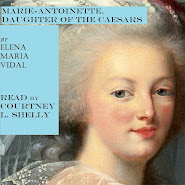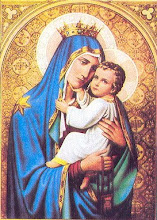While we greatly admire and are the beneficiaries of the work of those on whose shoulders we stand in the work to help restore the Catholic Church to its authentic glory, we can neither support nor encourage their ongoing, unnecessary and harmful attacks on the Church and the Holy Father....
Faithful Catholics need help in persevering through their anxieties and doubts, not continual reinforcement and encouragement of those troubling states. Less faithful Catholics form their judgments of "traditional Catholics" through the lens of perceived dissatisfaction and unhappiness with the Church and the Holy Father. Those who relentlessly criticize the Church, Her leaders, and especially the Holy Father, do immense harm to the Church Herself and discourage both potential converts and those struggling to stay faithful through the crisis that is all around us. The sad reputation of "traditional Catholics" as angry dissidents from virtually everything in the Church today is as well deserved as the reputations of those rightly described as modernists.
A line must be drawn when it comes to criticism of the Holy Father, even when he says or does things that would invite appropriate criticism when said or done by those of lower ecclesiastical rank. Errant priests and bishops can be replaced. The Pope cannot. It may make us cringe at times but it always was and always will be true that ubi Petrus, ibi ecclesia. There have been extraordinarily awful Popes in the past but, for all that, the Church not only survived but thrived. The Popes immediately before, during and after the Protestant Revolt showed little recognition or understanding of the catastrophe unfolding before them (not unlike the post-conciliar Popes of our own time) yet, from such unpromising soil emerged an astonishing number of great Saints, and the Council of Trent.
Australian Mary MacKillop became St. Mary of the Cross [LINK] in circumstances astonishingly similar to what we now perceive happening with the Franciscan Friars of the Immaculate (FFI). She founded a religious order, was replaced as Mother Superior by her local bishop, served for many years under her replacement before being restored as Mother Superior, was unjustly excommunicated by her bishop, and the order that she founded is, today, a complete mess. But she became a Saint through all that. She showed respect for her local bishop who truly didn't deserve it, even finding excuses for his behavior. During the time she was excommunicated, she didn't seek to start an alternative order to preserve the integrity of what she had started. She was obedient, humble, trusted God, and she became a Saint. (Read more.)
Friday, February 28, 2014
Pope-bashing
Here is an article from ChurchMilitantTV on why they will not engage in pope-bashing. To quote:
Thursday, February 27, 2014
Mother Mectilde and Friends
Here are more beautiful passages about the holy Benedictine Abbess Mother Mectilde de Bar from Fr. Mark:
Abbot Louys’ friendship with Catherine–Mectilde de Bar would have been akin to other more famous spiritual friendships of the 17th century: that of Vincent de Paul and Louise de Marillac, of Francis de Sales and of Jeanne–Françoise de Chantal, of Jean–Jacques Olier and Catherine de Langeac.
Mother Mectilde’s circle of male friends included besides Jean de Bernières and several other notable laymen, Benedictine monks of the Congregation of Saint–Maur, Premonstratensians, Cistercians, Cordeliers (Franciscan Friars), Tiercelin Penitents (Franciscans of the Third Order Regular), Carmelite Fathers, Capuchins, Lazarists, and Sulpicians. Mectilde de Bar was not narrow–minded. (Let us not rashly assume that the conspicuous absence of Jesuits means anything in particular!)
Mectilde de Bar was no shrinking violet when it came to engaging with the men of her day. She maintained her dignity, her exquisite sense of decorum and, at the same time, was not afraid of confronting her own humanity and the humanity of others on the terrain — or should I say battlefield? — of real life. Far from being a pious dreamer lost to this world and time, Mother Mectilde was, like Saint Teresa of Avila, a contemplative fully engaged in the messiness of life. Rarely, if ever, did things go as she hoped they would. Mectilde de Bar persevered in her Benedictine and Eucharistic vocation, quietly trusting God in the midst of war, famine, poverty, sickness, pillage, harassment from a rejected suitor, insecure housing, constant travel, vexing lawsuits, calumny, an attempted house invasion by the agents of a fake princess, and insidious detractions. God sent Abbot Épiphane Louys into her life to support her, defend her interests, and deepen her attraction to a fully Eucharistic life of adoration and reparation.
Born in 1614, the same year as Catherine–Mectilde de Bar, Épiphane (born Nicolas) Louys, was also, like her, a native of the Lorraine. Their peregrinations through a war–torn France led them both, at about the same time, to Paris. Early in 1664, Abbot Louys called on Mother Mectilde to give her news of her community in the Lorraine. A few months later, he appears as the protagonist in the drama surrounding the foundation of a monastery of perpetual adoration in Toul; the city’s notables are all opposed to it. Abbot Louys winning arguments prevail. He installs in the new monastery an image of Our Lady of Benoistevaux, a sanctuary in the care of the Premonstratensians. On 8 December 1664, Abbot Épiphane himself exposes the Blessed Sacrament in the monastery of Toul, thereby inaugurating the new observance. (Read more.)
Subscribe to:
Comments (Atom)



















